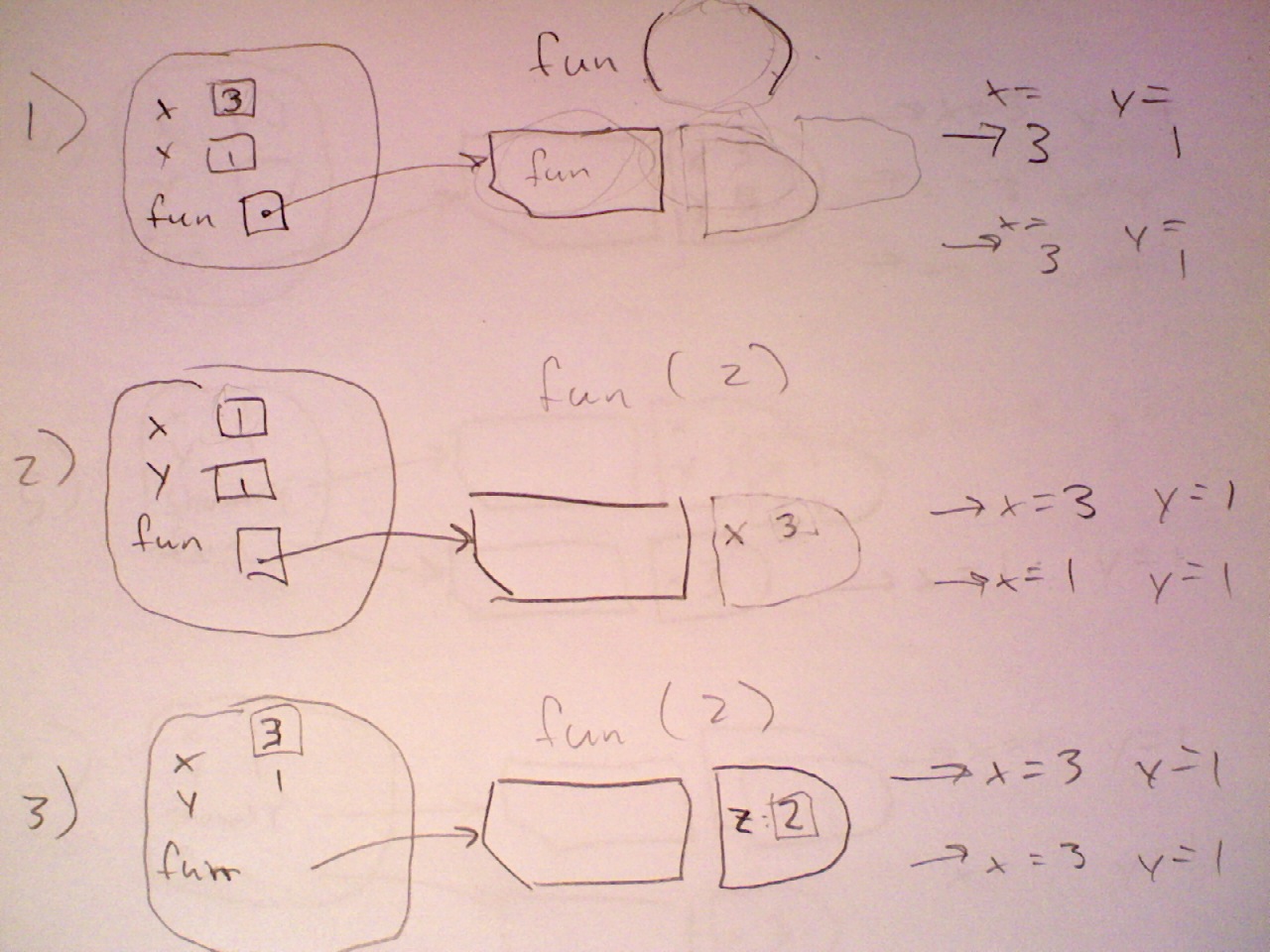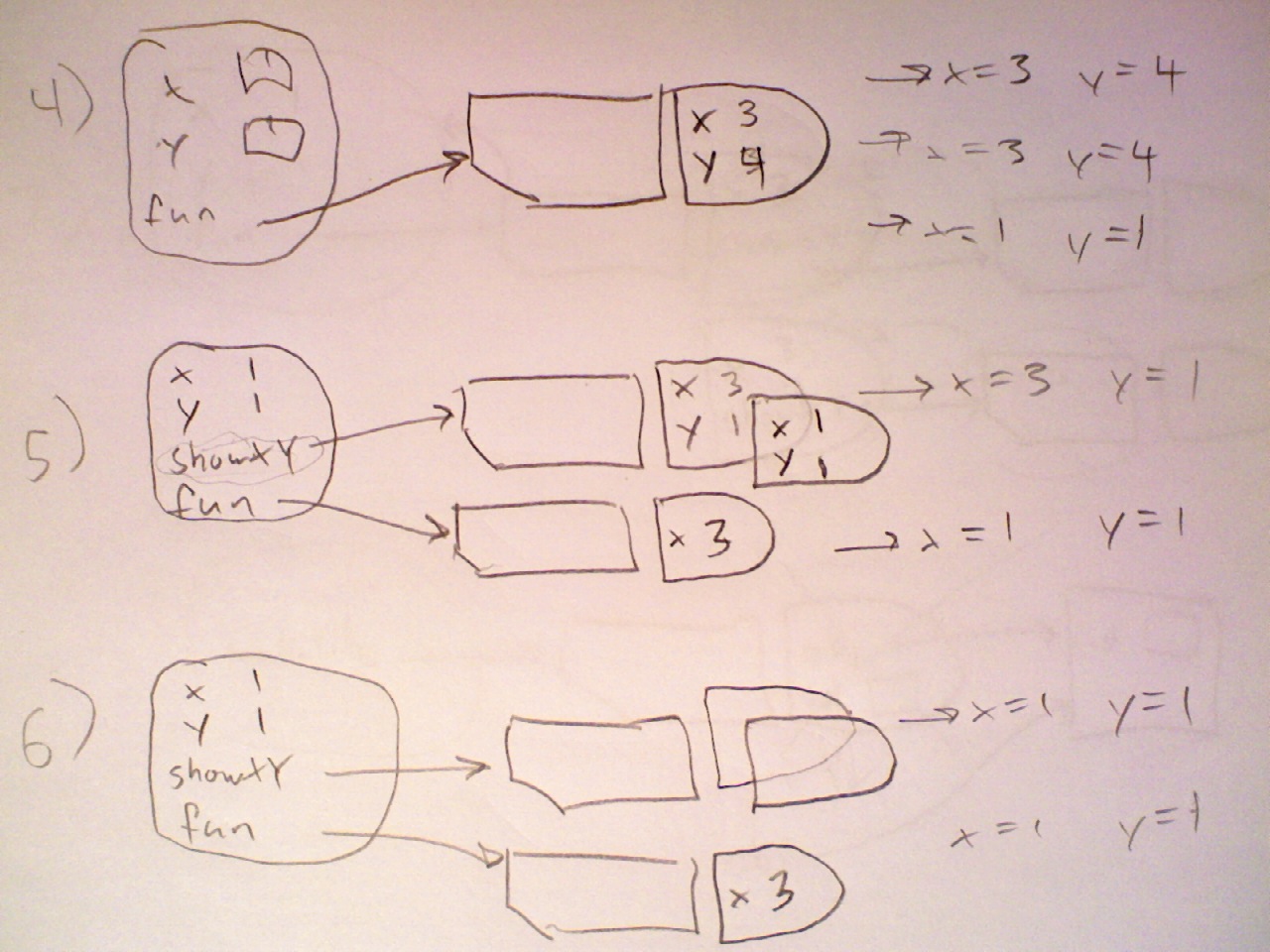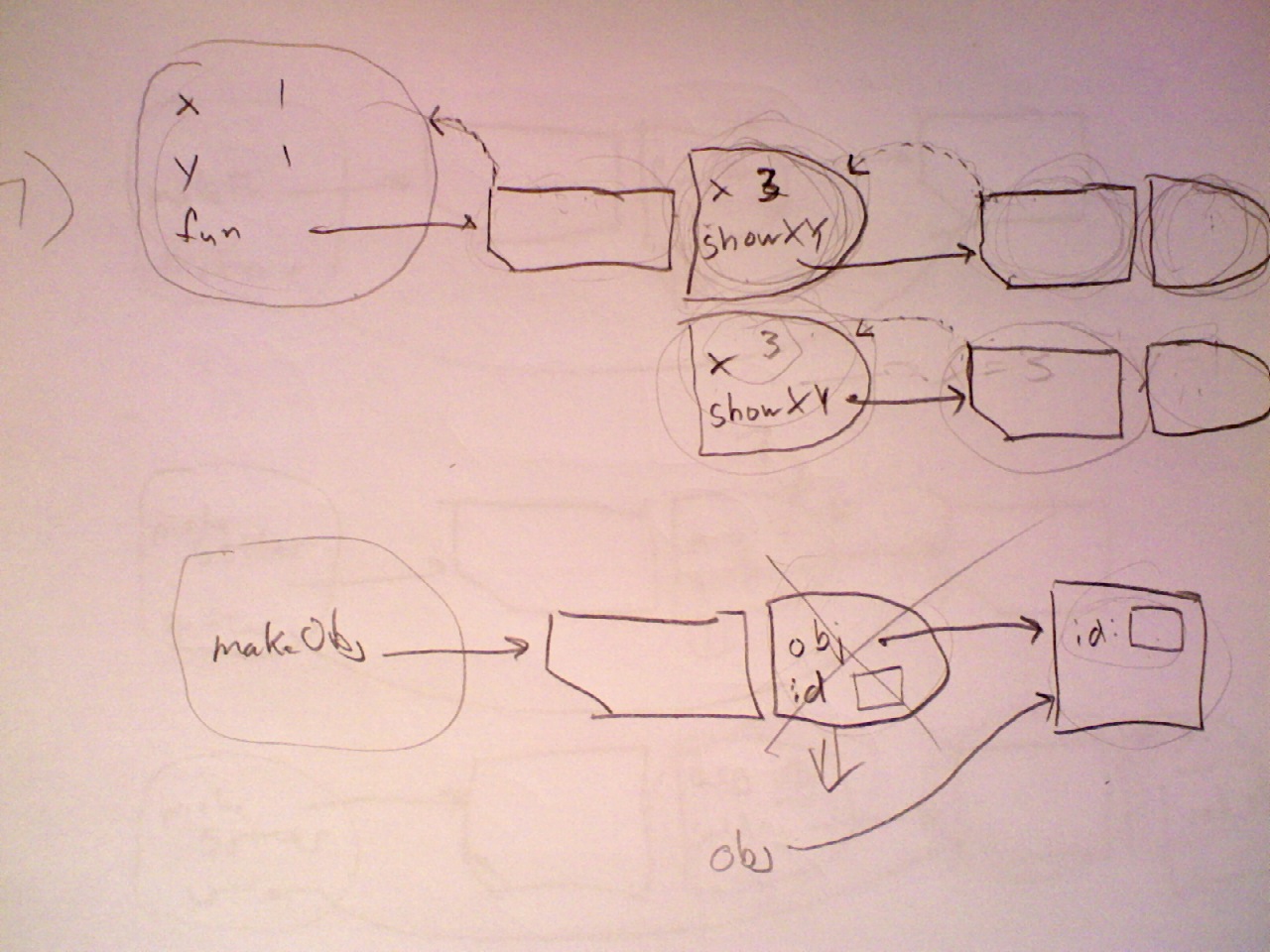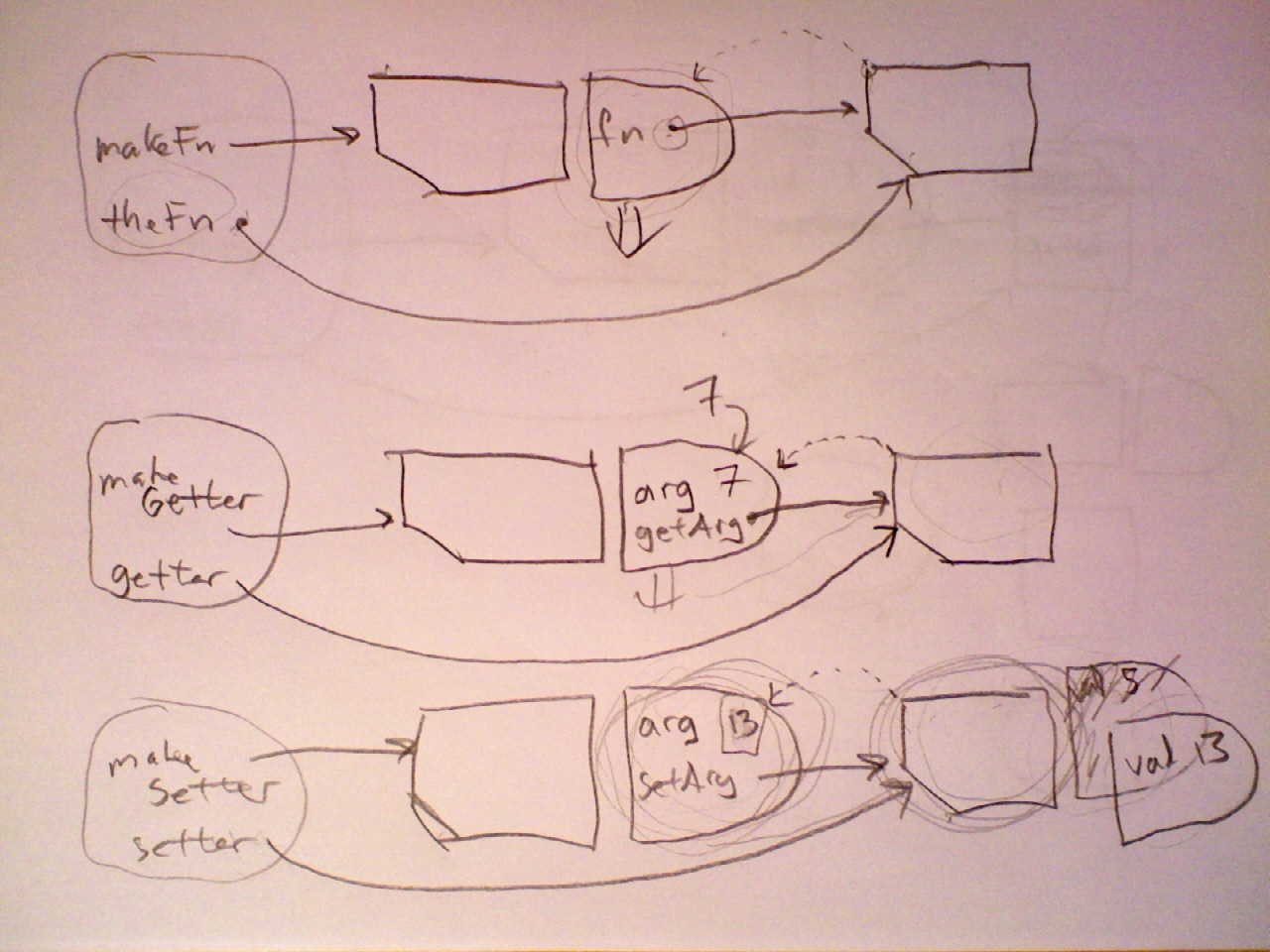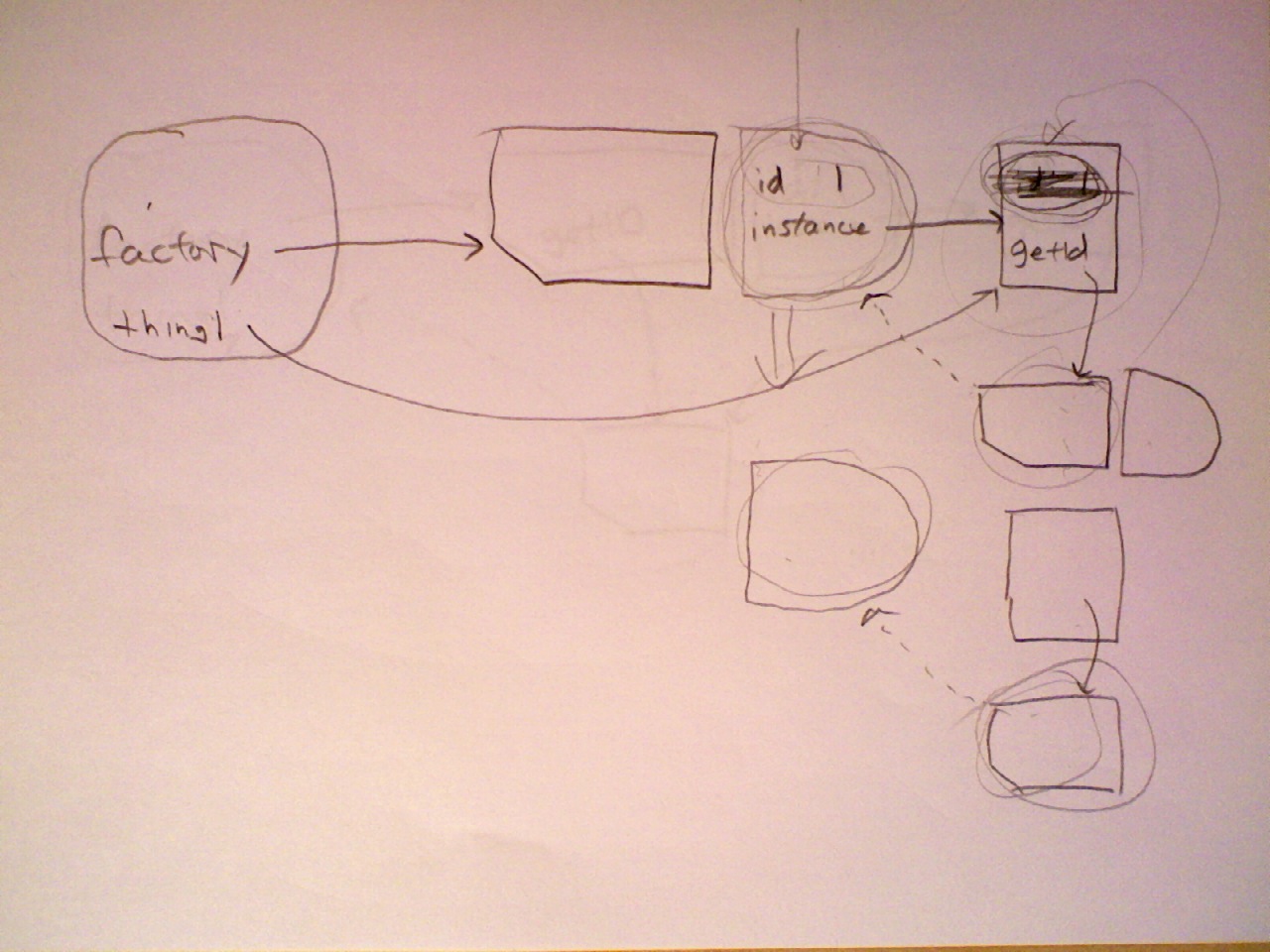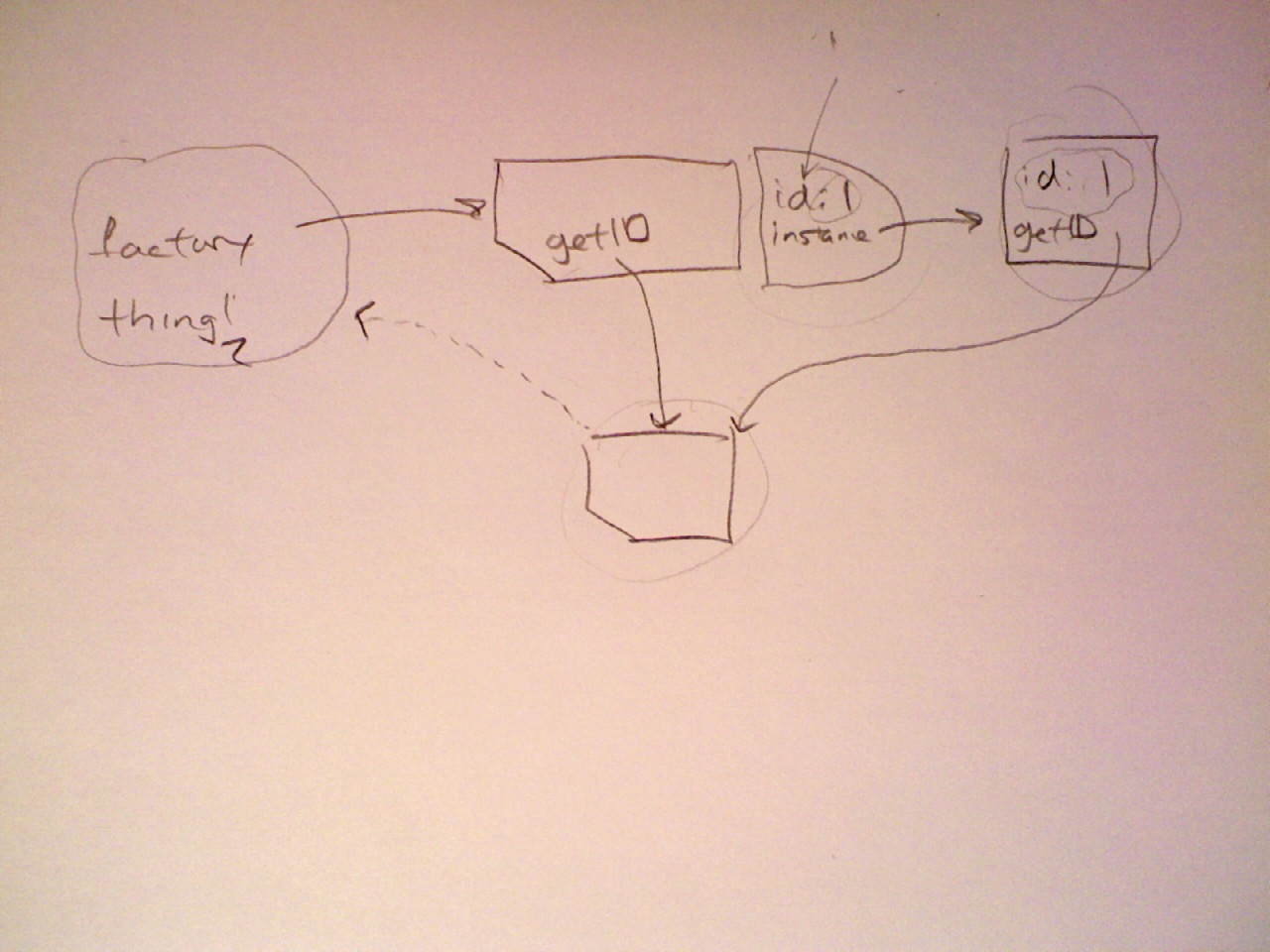CoreJS: Closure
10 Aug 2015Review of Scope
Predict and explain the output of each program below:
1.
var x=1, y=1;
function fun() {
x=3;
console.log('x='+x, 'y='+y);
}
fun();
console.log('x='+x, 'y='+y);
2.
var x=1, y=1;
function fun(x) {
x=3;
console.log('x='+x, 'y='+y);
}
fun(2);
console.log('x='+x, 'y='+y);
3.
var x=1, y=1;
function fun(z) {
x=3;
console.log('x='+x, 'y='+y);
}
fun(2);
console.log('x='+x, 'y='+y);
4.
var x=1, y=1;
function fun(x) {
x=3, y=3;
if (x) {
var y=4;
console.log('x='+x, 'y='+y);
}
console.log('x='+x, 'y='+y);
}
fun(2);
console.log('x='+x, 'y='+y);
5.
var x=1, y=1;
function showXY(x,y) {
console.log('x='+x, 'y='+y);
}
function fun(x) {
x=3;
showXY(x,y);
}
fun(2);
showXY(x,y);
6.
var x=1, y=1;
function showXY() {
console.log('x='+x, 'y='+y);
}
function fun(x) {
x=3;
showXY();
}
fun(2);
showXY();
7.
var x=1, y=1;
function fun(x) {
function showXY() {
console.log('x='+x, 'y='+y);
}
x=3;
showXY();
}
fun(2);
showXY();
Combined accessor function
Combine the getter and setter functions into a single function which can do both. The accessor function accessFn should be the only way of modifying or retrieving the variable privateVal.
function makeAccessor() {
var privateVal;
function accessFn(val) {
//...
}
return accessFn;
}
// Example of use:
var cache = makeAccessor();
cache(7);
cache(); //-->7
cache(9);
cache(); //-->9
Practice: Factory with personal instance methods
function factory(id) {
var instance = {};
instance.id = id;
instance.getID = function() {
return this.id;
}
return instance;
}
var thing1 = factory(1);
console.log(thing1.getID());
Rewrite the factory above to use closure to persist and retrieve the value of id instead of putting an id property on the instance.
Practice: Using Closure for Private Variables
var loanManager = {
assets: 1000,
debt: 1000,
rate: 0,
borrow: function(amount,rate) {
this.assets += amount;
this.debt += amount;
this.rate = rate;
}
compoundInterest: function() {
this.debt *= (1+this.rate);
},
repay: function(amount) {
this.assets -= amount;
this.debt -= amount;
}
}
Rewrite the code above using a closure, so that the values for assets, debt, and rate can only be changed by the methods borrow, compoundInterest, and repay. You'll need to group the methods together within an object and build that object in a factory.
Practice: Using Closure for Persistence
- Write a function that generates the next number each time it's called:
sequence(); //=> 0
sequence(); //=> 1
sequence(); //=> 2
- Write a function
counterthat returns your sequence generator:
var sequence1 = counter();
var sequence2 = counter();
sequence1(); //=> 0
sequence1(); //=> 1
sequence2(); //=> 0
sequence1(); //=> 2
sequence2(); //=> 1
Allow your counter to start at any number, for instance,
counter(5).Allow your counter to be reset:
var sequence1 = counter();
var sequence2 = counter();
sequence1.next(); //=> 0
sequence1.next(); //=> 1
sequence2.next(); //=> 0
sequence1.next(); //=> 2
sequence1.reset(); //=> void
sequence1.next(); //=> 0
sequence2.next(); //=> 1
sequence1.reset(5); //=> void
sequence1.next(); //=> 5
Hoisting
Here is an excellent article on hoisting.
Samples
Diagrams
